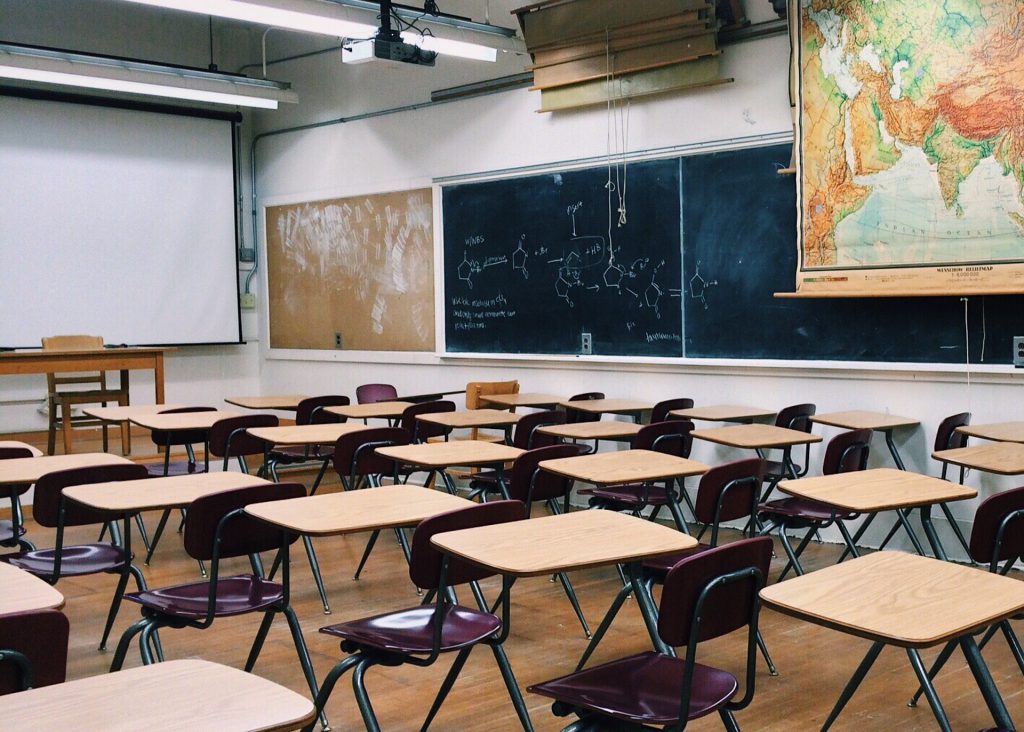State School Spending Hits Record $6 Billion
Both parties take credit for K-12 schools funding hike. But can it be sustained?
As Wisconsin’s K-12 classrooms open, expect “first day of school” victory laps from elected officials from both parties.
It’s traditional for governors to greet students on the first day, so Democratic Gov. Tony Evers – who started his career as a science teacher and served as state superintendent of public instruction – will be at a Milwaukee school or two or three. But also expect Republican legislators to join in back-to-school events.
One reason why: For the first time in history, state aid to K-12 schools will total more than $6 billion. That number resulted from the 2019-21 budget Republican legislators passed and Evers signed into law, after using his veto pen to boost state aid by an additional $87 million.
That $6 billion is significant for several reasons:
*State government will collect $17.4 billion in general-fund taxes this year, so 34 percent of all taxes will go to K-12 schools.
*$6 billion for K-12 schools is the biggest draw on the state government’s general-fund checkbook.
The second biggest draw is Medicaid health care for the poor, disabled and elderly, which will need $3.25 billion in state cash this year. Costing $10.6 billion overall, Medicaid is the single most expensive state program. The federal government pays most of Medicaid’s cost.
*$6 billion in state K-12 aid is a 17.6 percent increase from the 2010-11 school year, according to the non-partisan Legislative Fiscal Bureau.
*The state budget also boosted spending on special education programs to about $100 million – the first increase in 10 years.
In February, Evers asked for $600 million more for special education programs – a jump Republican Sen. Luther Olsen, chairman of the Senate Education Committee, dismissed as unreasonable. In a recent WisconsinEye Civil Dialogue program, Olsen conceded that exploding special education costs have been taking money away from other classroom programs. But boosting spending to $100 million was all state government could afford, Olsen added.
In the same program, Republican Rep. Jeremy Thiesfeldt, chairman of the Assembly Education Committee, said $100 million for special education covers about 30 percent of the costs. Thiesfeldt said school district administrators in and around his Fond du Lac-area Assembly district told him they are very grateful that state government will be paying 30 percent of special education costs.
Another reason for the victory laps is that School Choice, which Evers and Democratic legislators want abolished or scaled back, survived in the 2019-21 state budget.
This year, Evers and Republicans struck an unofficial truce on Choice: No major expansions, but no scaling it back. So, Wisconsin’s private schools are expected to enroll 41,600 Choice students this fall – 28,500 in Milwaukee; 3,700 in Racine, and 9,400 in private schools statewide.
According to the Fiscal Bureau, Choice will cost state and local taxpayers a record $340 million this year – $233 million for the Milwaukee program and $107 million for the Racine and statewide programs.
Democratic Rep. Sondy Pope, of Mt. Horeb, said on the WisconsinEye program that the $340 million Choice will cost this year should be going to public schools. And Democratic Sen. Chris Larson of Milwaukee said Choice schools don’t have the same accountability standards as public schools, so no knows how well they are educating students.
Responding, Thiesfeldt said parents across Wisconsin “want a choice” in where their children learn, so expanding Choice was justified – and working fine.
But, beyond the first-day-of-school hoopla, these long-term questions loom:
*Is it sustainable for 34 percent – or more – of all state general-fund taxes to go to K-12 schools?
*Can unpopular property taxes, which have been frozen or slowed on the average Wisconsin home for years, remain the second biggest source of K-12 school funding? In the 2017-18 school year, property taxes paid 42 percent of all K-12 costs. And that percentage is growing; it was 39 percent in 2008-09.
*Will four-year graduation rates of African-American high school students in urban districts improve? State Department of Public Instruction records say the four-year graduation rate for all MPS high school students in 2017-18 was 66 percent; for African-American students it was 62 percent. Four-year graduation rates were 81 percent in Madison for all students, and 65 percent for African-American students; in Racine, 74 percent graduation rate or all students, and 63 percent for African-Americans.
Steven Walters is a senior producer for the nonprofit public affairs channel WisconsinEye. Contact him at stevenscotwalters@gmail.com
The State of Politics
-
A Wisconsin Political Trivia Quiz
 Dec 15th, 2025 by Steven Walters
Dec 15th, 2025 by Steven Walters
-
The Fight Over Wisconsin’s House Districts
 Dec 8th, 2025 by Steven Walters
Dec 8th, 2025 by Steven Walters
-
The Battle Over On-Line Betting
 Nov 24th, 2025 by Steven Walters
Nov 24th, 2025 by Steven Walters




















